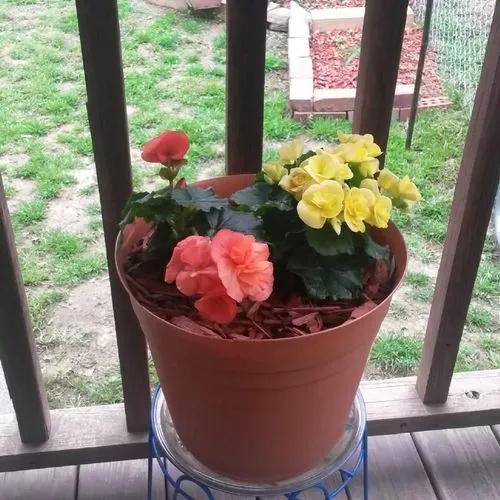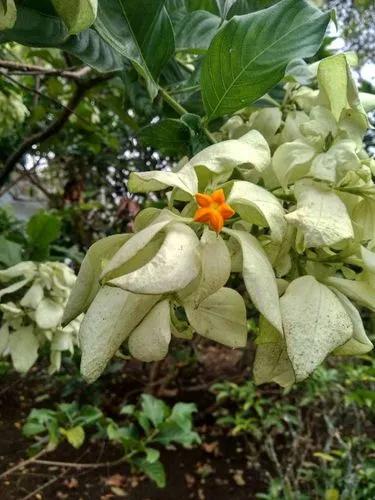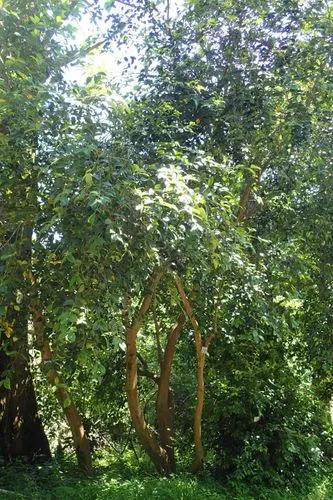Rhus copallinum (Rhus copallina is also used but, this is not consistent with the rules of the International Association for Plant Taxonomy), the winged sumac, shining sumac, dwarf sumac or flameleaf sumac, is a species of flowering plant in the cashew family (Anacardiaceae) that is native to eastern North America. It is a deciduous tree growing to 3.5–5.5 metres (11–18 ft) tall and an equal spread with a rounded crown. A 5-year-old sapling will stand about 2.5 metres. Shining sumac is often cultivated, where it is well-suited to natural and informal landscapes because it has underground runners which spread to provide dense, shrubby cover for birds and wildlife. This species is valued for ornamental planting because of its lustrous dark green foliage which turns a brilliant orange-red in fall. The fall color display is frequently enjoyed along interstate highways, as the plant readily colonizes these and other disturbed sites. The tiny, greenish-yellow flowers, borne in compact, terminal panicles, are followed by showy red clusters of berries which persist into the winter and attract wildlife. The flowers are yellow, flowering in the summer. The fruit attracts birds with no significant litter problem, is persistent on the tree and showy. The bark is thin and easily damaged from mechanical impact; branches droop as the tree grows, and will require pruning for vehicular or pedestrian clearance beneath the canopy; routinely grown with, or trainable to be grown with, multiple trunks. The tree wants to grow with several trunks but can be trained to grow with a single trunk. It has no thorns.
Winged Sumac Care
Rhus Copallinum



How to Care for the Plant

Water

Water as appropriate for your climate, which will be dependant on both the rainfall and humidity levels in your area.

Fertilizer

Burning bush shrubs won't need any additional nutrients once established, but young shrubs can benefit from the application of liquid fertilizer. Plan to feed your bush three to four times throughout its growing season, from mid-spring to mid-summer.

Sunlight

Plant your burning bush in an area that gets full sunlight, gifting the plant with rays for at least six to eight hours a day. In warmer climates, the bush can stand a partially shady spot, specifically in the hotter afternoon hours.

Soil

While it can adapt to most soil types (besides soggy soil with poor drainage), burning bush prefers average soil with a moderate moisture level. It also favors a slightly acidic soil pH but will grow in an alkaline or neutral blend as well.

Temperature

There is very little you need to do to help your burning bush thrive if grown in the proper USDA hardiness zones, but you can mulch around the root mound to help keep the plant's roots cool in warmer climates.

Additional

Toxic components (substances known as alkaloids and cardenolides) found in all parts of burning bush affect humans, dogs, cats, and horses.

Popularity

442 people already have this plant 86 people have added this plant to their wishlists
Discover more plants with the list below
Popular articles





